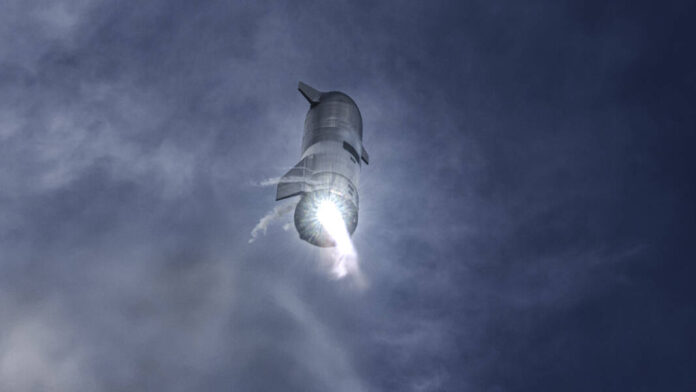ORLANDO, Fla. — The first flight of the SpaceX Starship with Super Heavy booster will have to bide its time a little longer.
Elon Musk’s plans to get an orbital test flight underway from the company’s southeast Texas launch facility has been awaiting approval from the Federal Aviation Administration. That won’t come until the FAA releases the results of a final Programmatic Environmental Assessment that was originally targeting to be complete by the end of 2021, but has seen a series of delays.
On Friday, the FAA announced it was pushing its expected release of that report to April 29. The assessment was expected March 28, but a statement from the FAA said it was currently reviewing and coordinating the final version with local, state and federal agencies before its release.
That review doesn’t guarantee an OK for SpaceX to fly either, as Musk and others have stated that it could pave the way for a more intense Environmental Impact Statement, or EIS, that could delay any Texas launch plans beyond 2022.
If faced with an EIS, Musk has said plans for the Starship launch may need to shift in the short-term to Kennedy Space Center in Cape Canaveral, Florida, where work continues on hardware to support the new rocket from KSC’s Launch Pad 39-A, the current home to SpaceX’s Falcon 9 and Falcon Heavy launches.
Musk said in February he expects what would be the most powerful rocket to ever launch from the Earth still to have its first flight by the end of the year, even if it has to shift to Florida.
To date, the company has flown prototype versions of Starship without the booster to about 6 miles altitude, and attempted landings back in Texas, sometimes with fiery results. Those used only three or fewer of the new, powerful Raptor engines. The fully working orbital version will be coupled with a Super Heavy booster with 39 Raptor engines, 33 on the booster and six on Starship.
Even if SpaceX were to get FAA approval, the company announced it was switching to updated versions of its Raptor engines, so it’s not as if there’s a rocket ready to go and fly.
The plan for the next test flight, though, if it were to lift off from Texas, seeks to launch a stacked version of Starship and Super Heavy, have them separate, return the booster to land on a SpaceX vessel 20 miles offshore in the Gulf of Mexico while Starship achieves orbit for least one trip around the Earth and then lands in the Pacific Ocean.
Texas remains SpaceX’s preferred location for continued testing of Starship.
“Because we have a lot of launches going out of the Cape we didn’t want to disrupt the Cape activity — the operational launches — with the advance R&D of Starship,” Musk said in February. “So it was important to decouple the operational launches from the R&D launches. That’s why we’re at this location.”
2022 is proving to be the busiest yet for SpaceX for its existing stable of rockets including 10 launches through the first 10 weeks of the year, and plans to hit at least 50 launches among its KSC, Cape Canaveral Space Force Station and Vandenberg Space Force Station sites. Just within the next month, SpaceX Falcon 9s are slated to lift off with Crew Dragon capsules on two missions to the International Space Station.
So a shift to KSC for Starship testing could prove complicated.
When it does launch, the Starship and Super Heavy combo would generate more than 16 million pounds of thrust. That nearly doubles the power of NASA’s planned Artemis flights and more than doubles those of the Apollo missions.
Immediate plans for Starship are for Starlink satellite delivery to add to the company’s growing constellation of internet satellites, as well as to develop a version to assist NASA in getting humans back on the moon by 2025. Also upcoming is a tourist flight to orbit the moon funded by a Japanese fashion tycoon who’s taking along several artists.
The main purpose for its development, though, is eventually to help create a self-sustaining colony on Mars.


